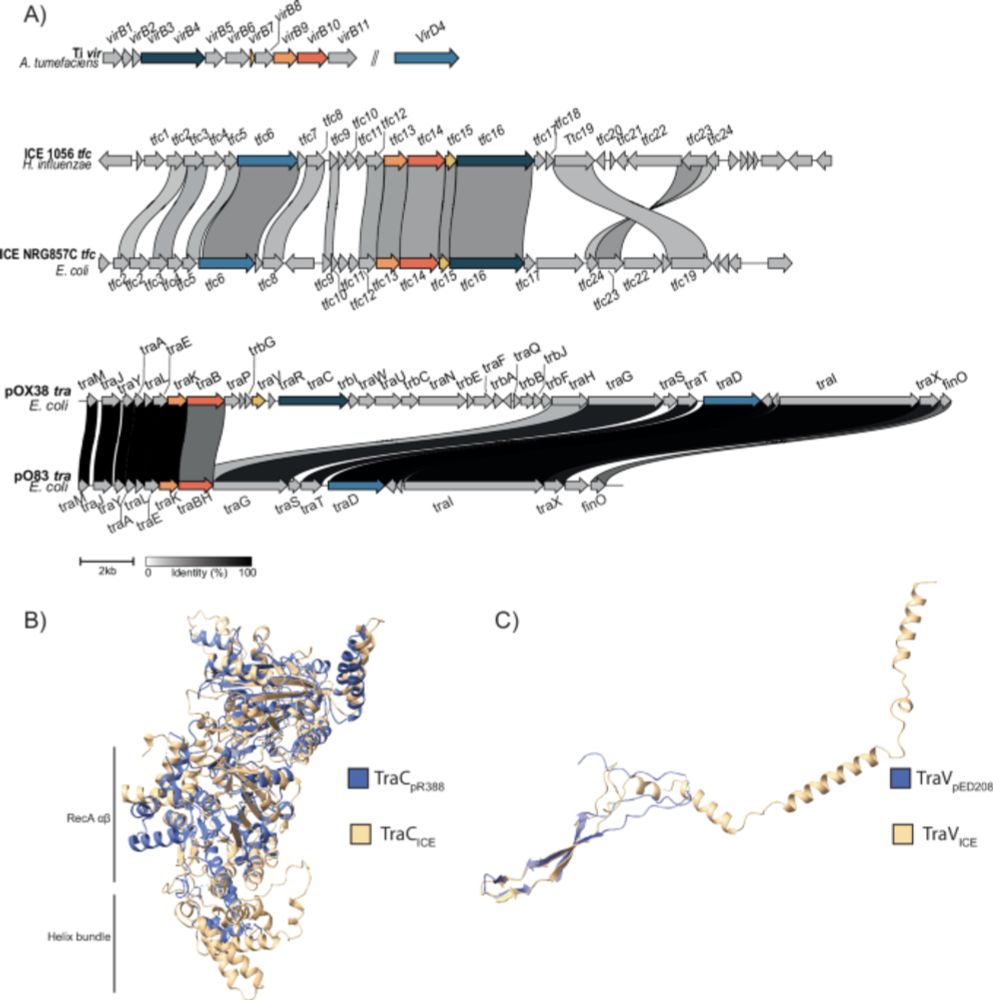Reposted by: Simon Roux
Reposted by: Simon Roux
Reposted by: Simon Roux
@gfoesoc.bsky.social
@britishecologicalsociety.org
@ecologicalsociety.bsky.social
@uslter.bsky.social
Please repost!

Reposted by: Simon Roux, Joshua S. Weitz
academic.oup.com/ismecommun/a...

Reposted by: Simon Roux, Mart Krupovìč

Reposted by: Simon Roux, Jesse M. Shapiro, José R. Penadés , and 1 more Simon Roux, Jesse M. Shapiro, José R. Penadés, Alan McNally
Ever wondered why only a fraction of genomes encode CRISPR immunity? 🧬 🦠
Turns out CRISPR is rarely beneficial against virulent phages, being most beneficial against those for which resistance mutations are rare!
An epic effort by Rosanna Wright
www.biorxiv.org/content/10.1...


Reposted by: Simon Roux

Reposted by: Simon Roux
Candidates who win Fellowships will be offered a Tenure Track Group Leader position from the outset, initially for 5 years.
Find out more: www.jic.ac.uk/training-car...

Reposted by: Simon Roux
Reposted by: Simon Roux
patents.google.com/patent/AU201...
Reposted by: Simon Roux

Reposted by: Simon Roux
We 👉🏻@nanamikubota.bsky.social show that these Pf phages can go ROGUE.
"Filamentous cheater phages drive bacterial and phage populations to lower fitness"
🔗 authors.elsevier.com/c/1lt5I3QW8S...

Reposted by: Simon Roux, Alan Richardson, Jon Agar , and 1 more Simon Roux, Alan Richardson, Jon Agar, Evan Roberts
aprecruit.berkeley.edu/JPF05065

Reposted by: Simon Roux
📄https://doi.org/10.1371/journal.pone.0329289
👤EVBC: Ali Pasha

Reposted by: Simon Roux
Unlocking the genomic repertoire of a cultivated megaphage | npj Viruses share.google/HgU1cjRnaHWv...
#phage #bacteriophage
Reposted by: Simon Roux
journals.plos.org/plospathogen...

Reposted by: Simon Roux
#CurrOpinMicrobiol from @lgbacteria.bsky.social
www.sciencedirect.com/science/arti...

Reposted by: Simon Roux

Reposted by: Simon Roux, Jesse M. Shapiro, José R. Penadés
Thread 1/n

Reposted by: Simon Roux
Reposted by: Simon Roux
Boring beetles bring blue wood fungus, but butterscotch brings birds that bite the beetles & burning brings more beneficial terpenes.
Now go stick your nose in some sap.
More reading here:

Reposted by: Simon Roux, Jonathan A. Eisen, Jesse M. Shapiro , and 2 more Simon Roux, Jonathan A. Eisen, Jesse M. Shapiro, Smith, Alan McNally
1) MMG (my dept): fundamental research in med micro
2) Peds ID / I4Kids institute
3) Center for Vaccine Research
🔗 to all 3 w/info: www.linkedin.com/posts/vaughn...

Reposted by: Simon Roux
Reposted by: Simon Roux
A Cytoscape app is also available to make your life easier (and prettier)
#microbiome #metabolic-modeling #networks

by Simon Roux
Also, no matter how much I wish it wasn't true, the same applies to CRISPR spacer hits 🥲
Reposted by: Simon Roux
We propose that physical constraints — such as pore anatomy limiting phage access or skin physiology induced phage-resistant states — may explain the lack of coevolutionary arms race.
Reposted by: Simon Roux
Surprisingly, phage-sensitive C. acnes subphylogroups dominate across the globe.
This is true even in samples with high virus-to-microbe ratios.

Reposted by: Simon Roux
Excited to share our latest, led by A. Delphine Tripp, showing a case where phage is just not that important:
Phage-mediated lysis does not determine Cutibacterium acnes colonization on human skin
www.biorxiv.org/content/10.1...
🧵

Reposted by: Simon Roux, Jonathan A. Eisen

